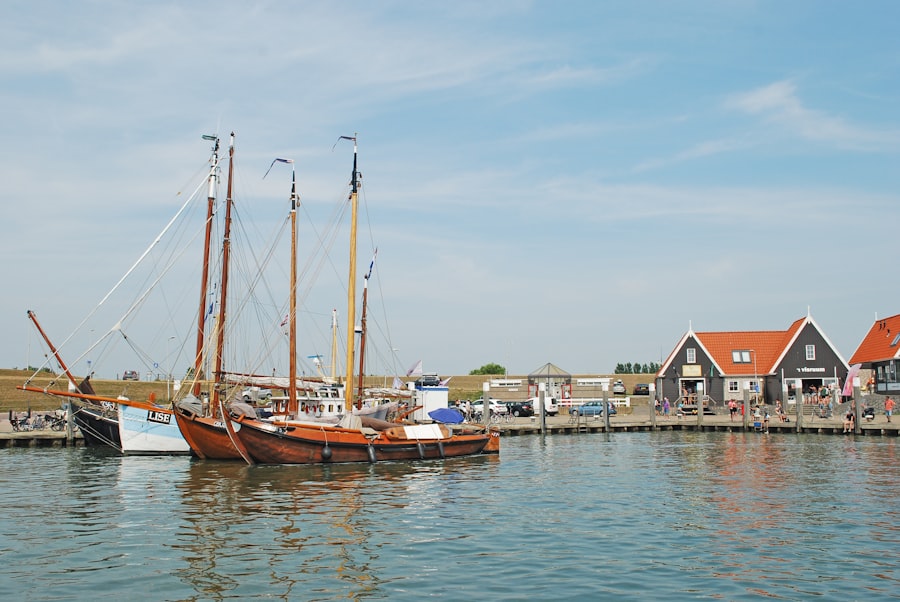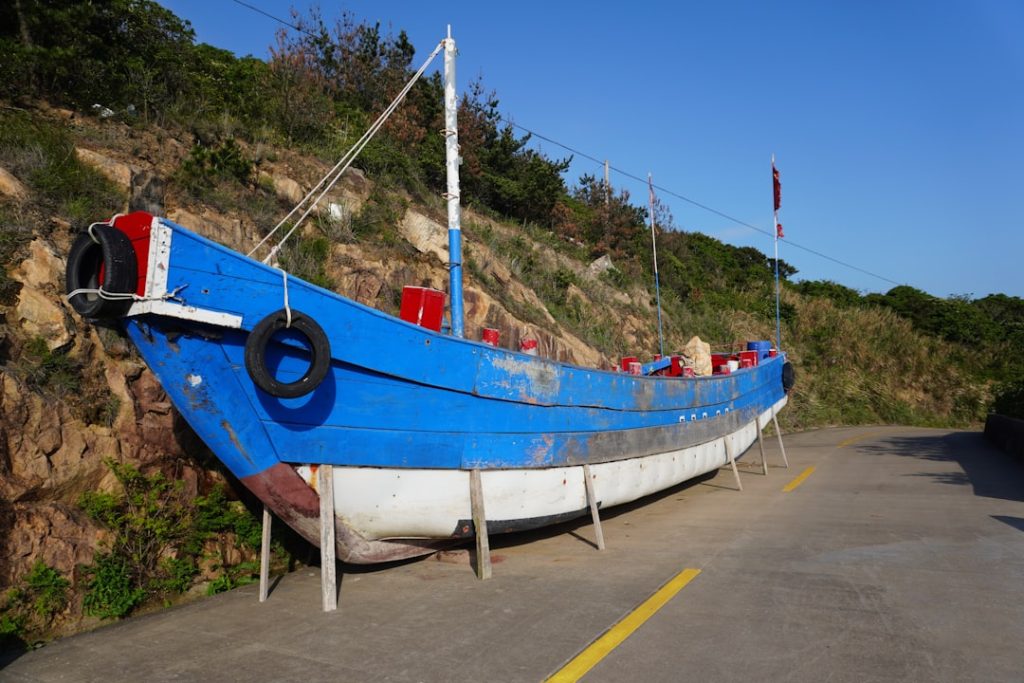The allure of sailing is timeless, drawing enthusiasts from all walks of life to the open waters. For many, the dream of owning a sailing boat represents not just a mode of transportation but a lifestyle choice that embodies freedom, adventure, and a deep connection to nature. As the market for sailing boats continues to evolve, prospective buyers are presented with a plethora of options, each catering to different needs, preferences, and budgets.
Whether you are a seasoned sailor or a novice eager to embark on your first voyage, understanding the landscape of sailing boats for sale is crucial in making an informed decision. The process of purchasing a sailing boat can be both exhilarating and daunting. With various types of vessels available, ranging from small dinghies to luxurious yachts, the choices can be overwhelming.
Each type of boat comes with its own set of characteristics, advantages, and potential drawbacks. Additionally, factors such as intended use, sailing experience, and budget play significant roles in determining the right fit. This article aims to provide a comprehensive overview of the sailing boat market, exploring the different types available, essential features to consider, tips for making the right choice, and resources for finding the perfect vessel.
Key Takeaways
- Understand the different types of sailing boats to find one that suits your needs.
- Consider key features and specifications like size, hull type, and sail configuration.
- Use practical tips to choose the right boat based on your experience and intended use.
- Explore various sources including dealers, brokers, and online platforms to find boats for sale.
- Plan for financing options and ongoing maintenance to ensure a smooth sailing experience.
Types of Sailing Boats Available
Sailing boats can be broadly categorized into several types, each designed for specific purposes and sailing conditions. One of the most common types is the monohull sailboat, characterized by its single hull and traditional design. Monohulls are popular among recreational sailors due to their stability and ease of handling.
They come in various sizes, from small day sailors to larger cruising yachts capable of long-distance voyages. The design of monohulls allows for a comfortable living space below deck, making them ideal for extended trips. Another significant category is the multihull sailboat, which includes catamarans and trimarans.
These vessels feature two or three hulls, respectively, providing increased stability and speed compared to monohulls. Catamarans are particularly favored for their spacious decks and living areas, making them excellent choices for families or groups looking to enjoy leisurely sailing experiences. Trimaran designs offer exceptional performance and agility on the water, appealing to those who prioritize speed and maneuverability.
Each type has its own unique advantages, making it essential for buyers to consider their sailing goals when choosing between monohulls and multihulls.
Features and Specifications to Consider

When evaluating sailing boats for sale, several key features and specifications should be taken into account to ensure that the vessel meets your needs. One of the most critical aspects is the size of the boat, which can significantly impact its performance and comfort level. The length overall (LOA) is a common measurement used to describe a boat’s size; larger boats typically offer more space but may be more challenging to handle for inexperienced sailors.
Additionally, beam width affects stability and interior space; wider boats tend to be more stable but may also require more effort to maneuver. Another important consideration is the sail plan, which refers to the arrangement and types of sails on the boat. Common sail configurations include sloop rigs, ketch rigs, and yawl rigs.
Sloop rigs are characterized by a single mast with a fore-and-aft sail configuration, making them popular for their simplicity and efficiency. Ketch rigs feature two masts, allowing for greater versatility in sail handling and performance in varying wind conditions. Understanding these configurations can help buyers select a boat that aligns with their sailing style and preferences.
Tips for Choosing the Right Sailing Boat
| Tip | Metric/Consideration | Description |
|---|---|---|
| Determine Purpose | Usage Type | Decide if the boat is for racing, cruising, day sailing, or long-distance voyages. |
| Boat Size | Length Overall (LOA) | Choose a size that fits your crew size and storage capabilities; common sizes range from 20 to 50 feet. |
| Hull Type | Monohull vs. Multihull | Monohulls offer traditional sailing experience; multihulls provide stability and speed. |
| Material | Fiberglass, Aluminum, Wood | Fiberglass is common and low maintenance; aluminum is durable; wood requires more upkeep. |
| Draft | Depth Below Waterline | Shallow draft is better for coastal waters; deeper draft improves stability and performance offshore. |
| Budget | Initial Cost & Maintenance | Consider purchase price plus ongoing maintenance and mooring fees. |
| Ease of Handling | Sail Plan Complexity | Simple rigs are easier for beginners; complex rigs offer better performance but require skill. |
| Safety Features | Life Raft, Navigation Lights, Bilge Pumps | Ensure the boat is equipped with essential safety equipment for your sailing environment. |
| Storage & Comfort | Cabin Space, Berths, Galley | Consider the number of people and duration of trips to ensure adequate living space. |
| Resale Value | Brand Reputation & Condition | Choose reputable brands and well-maintained boats to retain value over time. |
Selecting the right sailing boat involves careful consideration of various factors beyond just aesthetics or price. First and foremost, potential buyers should assess their sailing experience and comfort level on the water. For beginners, smaller boats with simpler rigging systems may be more manageable and less intimidating.
Conversely, experienced sailors may seek larger vessels with advanced features that allow for more complex sailing maneuvers. Another critical aspect is determining how you plan to use the boat. Will it be primarily for day sailing, weekend getaways, or long-distance cruising?
This decision will influence not only the size and type of boat you choose but also its amenities and storage capacity. For instance, if you envision extended trips with family or friends, opting for a boat with ample sleeping quarters and kitchen facilities will enhance your overall experience on the water. Additionally, considering where you will be sailing—whether in coastal waters or open seas—can help narrow down your options based on the vessel’s design and capabilities.
Where to Find Sailing Boats for Sale
The search for sailing boats for sale can take many forms, depending on your preferences and resources. One of the most traditional avenues is through local boat dealerships or brokers specializing in sailing vessels. These professionals often have extensive knowledge of the market and can provide valuable insights into various models and brands.
Visiting boat shows is another excellent way to explore different options in person; these events often feature a wide range of boats from various manufacturers, allowing potential buyers to compare features side by side. Online platforms have revolutionized the way people buy and sell boats. Websites dedicated to boating enthusiasts often list new and used sailing boats for sale across different price ranges.
These platforms allow users to filter searches based on specific criteria such as size, type, price range, and location. Additionally, social media groups and forums dedicated to sailing can provide leads on available boats as well as firsthand accounts from current owners about their experiences with specific models.
Financing Options for Sailing Boat Purchase

Purchasing a sailing boat is a significant investment that often requires careful financial planning. Many buyers explore financing options to make their dream of boat ownership more attainable. Traditional bank loans are one common route; however, securing financing can depend on factors such as credit history and income stability.
Some banks offer specialized marine loans designed specifically for purchasing boats, which may come with favorable terms compared to standard personal loans. Another option is to consider financing through the dealership or broker from whom you are purchasing the boat. Many dealers have partnerships with financial institutions that can streamline the loan process for buyers.
Additionally, some manufacturers offer financing programs that allow buyers to purchase new boats directly from them with competitive interest rates. It’s essential to compare different financing options carefully to find the best terms that suit your financial situation while ensuring that you remain within your budget.
Maintenance and Care for Sailing Boats
Owning a sailing boat comes with responsibilities that extend beyond just enjoying time on the water; regular maintenance is crucial to ensure safety and longevity. One of the primary aspects of boat maintenance involves inspecting and caring for the sails. Sails should be checked regularly for signs of wear or damage, as even small tears can lead to significant issues while sailing.
Proper storage when not in use—such as keeping sails dry and protected from UV rays—can prolong their lifespan. The hull also requires attention; regular cleaning helps prevent algae growth and barnacle accumulation that can affect performance. Depending on whether the boat is made from fiberglass or wood, different cleaning products may be necessary.
Additionally, routine checks on essential systems such as electrical wiring, plumbing, and engine components are vital for safe operation. Establishing a maintenance schedule can help owners stay organized and ensure that all aspects of their vessel are in good working order before setting sail.
Conclusion and Final Thoughts
The journey toward owning a sailing boat is filled with excitement and anticipation but requires careful consideration at every step. From understanding the various types of vessels available to evaluating essential features and specifications, prospective buyers must approach this decision with thorough research and planning. By assessing personal needs and preferences while exploring financing options and maintenance requirements, individuals can make informed choices that align with their sailing aspirations.
Ultimately, whether you envision leisurely weekend sails or adventurous long-distance voyages, finding the right sailing boat can open up a world of possibilities on the water. The experience of navigating through waves under billowing sails is one that resonates deeply with many sailors—a connection forged between man and nature that transcends mere transportation. As you embark on this journey toward boat ownership, remember that each choice you make will shape your adventures on the open sea.


